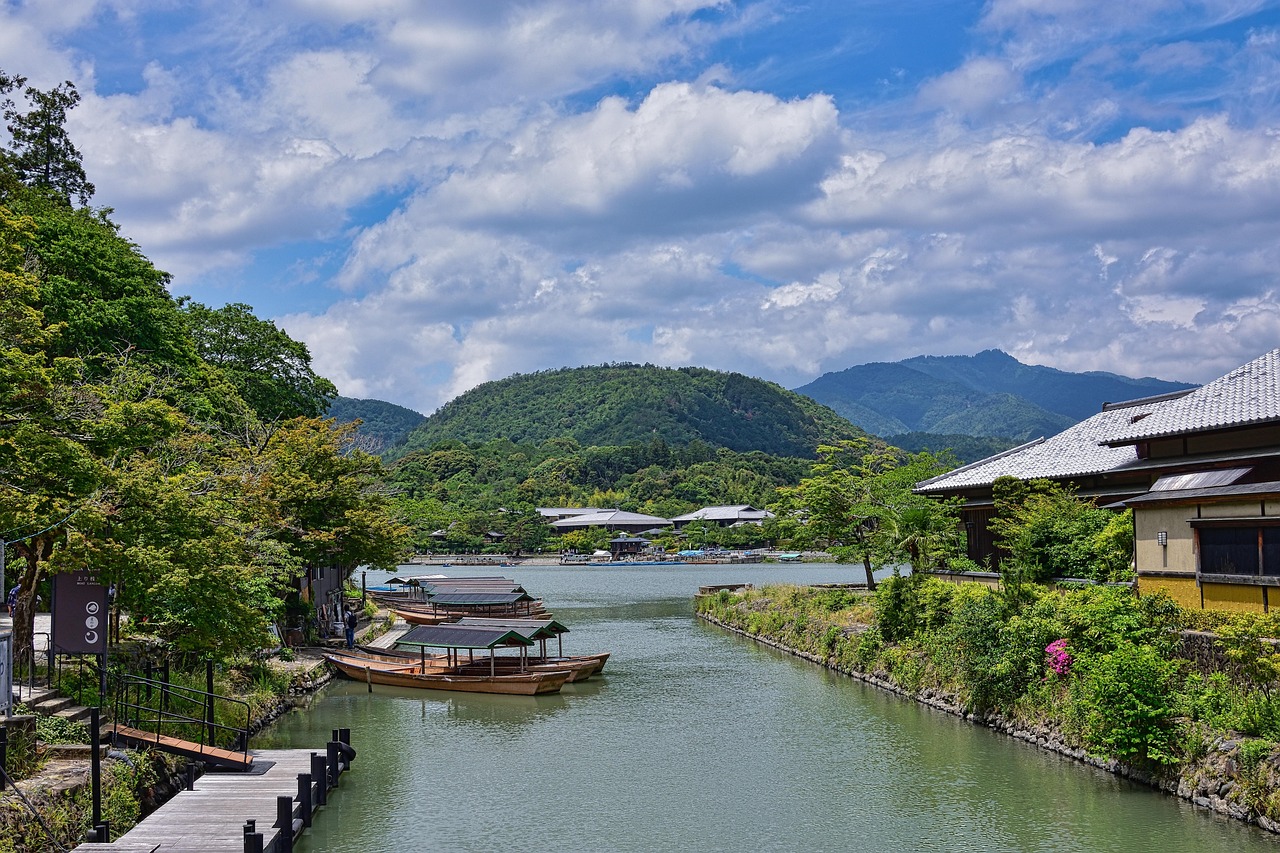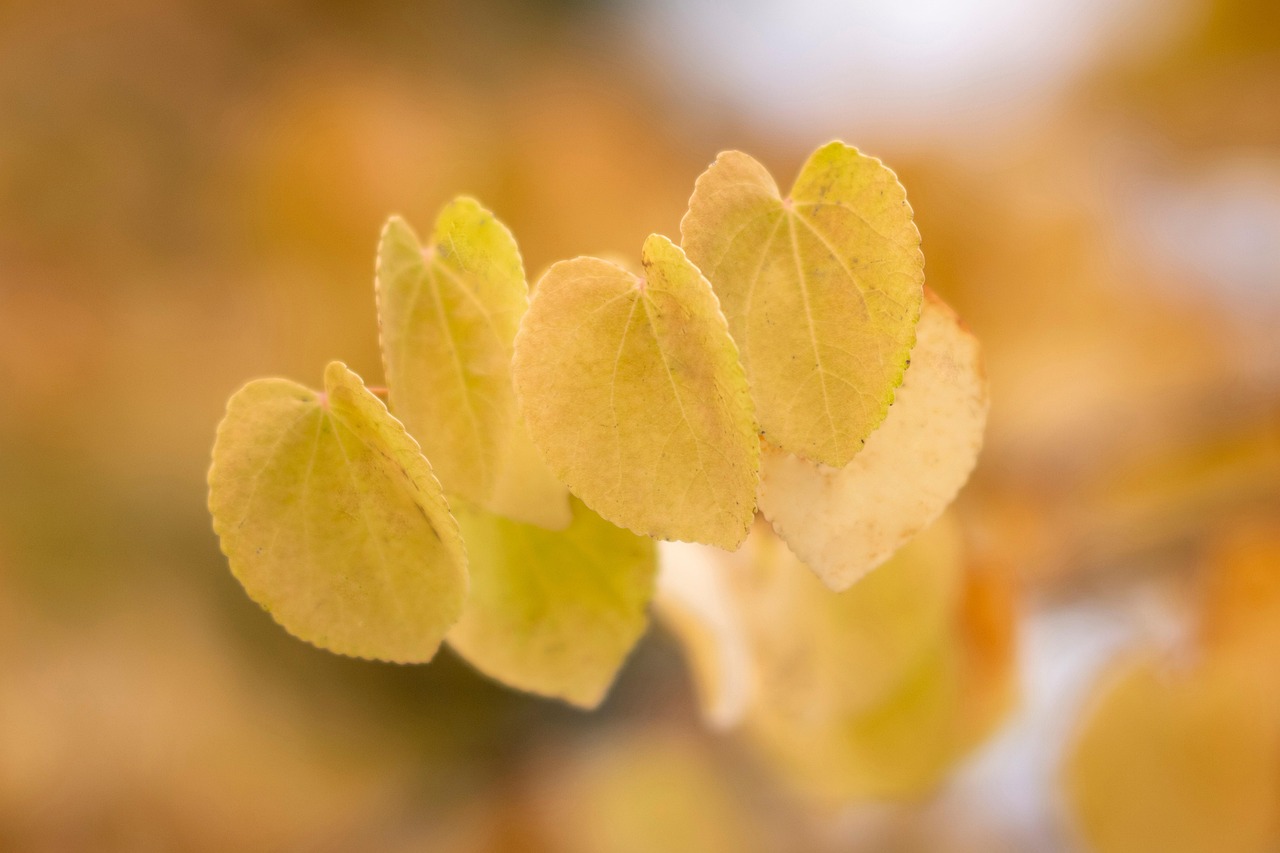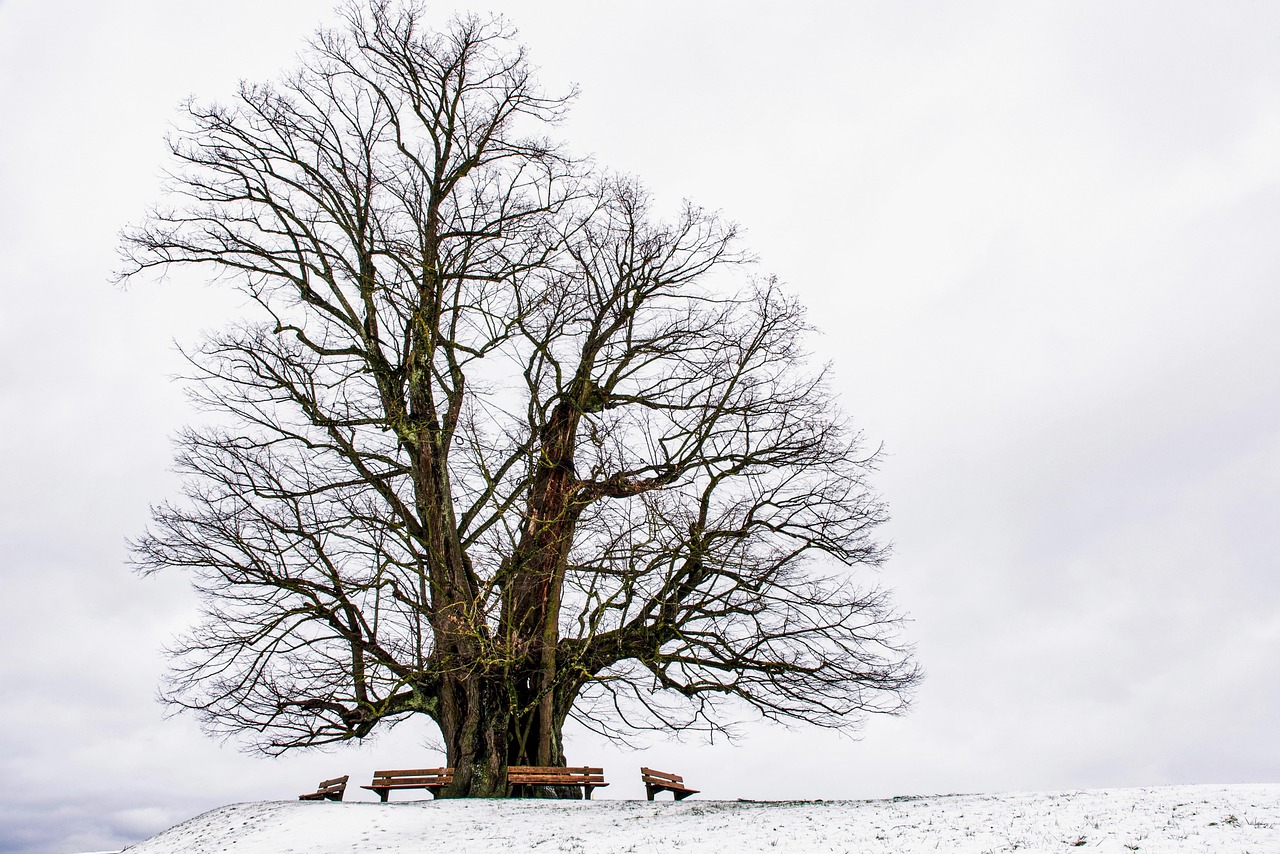The Katsura tree (Cercidiphyllum japonicum) has a moderate growth rate, typically ranging from 12 to 24 inches per year. This growth contributes to its stunning autumn foliage, showcasing vibrant shades of yellow, orange, and red that create a beautiful landscape in fall.
Understanding the Katsura Tree
The Katsura tree is native to East Asia, specifically Japan, China, and Korea. It is renowned for its heart-shaped leaves and spectacular fall color. As a deciduous tree, it sheds its leaves in autumn, making way for a fresh display each spring. Gardeners and landscapers appreciate the Katsura tree not only for its beauty but also for its adaptability to various soil types and climates. This makes it a popular choice for parks, gardens, and urban settings.

In addition to its aesthetic appeal, the Katsura tree emits a sweet aroma reminiscent of cotton candy during the spring leaf-out. This unique characteristic draws many people to plant it in their landscapes. The tree also plays a significant role in supporting local ecosystems by providing habitat for various birds and insects.
Growth Rate Factors
The growth rate of the Katsura tree can be influenced by several factors. Understanding these elements can help gardeners optimize their growth conditions. Some key factors include:
- Soil Quality: Katsura trees thrive in well-drained, loamy soils rich in organic matter.
- Watering: Regular watering is essential, especially during dry spells, to promote healthy growth.
- Sunlight: These trees prefer full sun to partial shade, which impacts their overall growth rate.
- Climate: They grow best in USDA hardiness zones 4 to 8, where temperatures are moderate.
Expected Growth Rates
The growth rate for a Katsura tree varies based on age and environmental conditions. Young trees typically grow faster than older specimens. Below is a table outlining the expected growth rates at different stages of life:

| Tree Age | Typical Growth Rate (inches/year) | Height at Maturity (feet) |
|---|---|---|
| 1-3 years | 12-24 | 10-15 |
| 4-10 years | 12-18 | 15-30 |
| 11+ years | 6-12 | 30-40 |
Younger Katsura trees can achieve impressive growth rates when planted in optimal conditions. However, their growth rate tends to slow as they mature. In ideal circumstances, these trees can reach heights of 30 to 40 feet at maturity, making them significant additions to any landscape.
Caring for Your Katsura Tree
To ensure that your Katsura tree reaches its full potential, proper care is essential. Here are some tips to maintain healthy growth:
- Fertilization: Use a balanced fertilizer during the growing season to provide necessary nutrients.
- Pruning: Prune young trees to encourage strong branching structures and remove any dead or damaged limbs.
- Pest Management: Regularly check for pests such as aphids or scale that may affect the health of your tree.
- Mulching: Apply mulch around the base of the tree to retain moisture and suppress weeds.
By following these care guidelines, you can enhance the growth rate of your Katsura tree, leading to a more vibrant display of autumn foliage. Proper attention will ensure that your tree not only thrives but also adds beauty and ecological value to your environment.

Optimal Growing Conditions for Katsura Trees
To achieve the best growth rate and stunning autumn foliage, it is crucial to understand the optimal growing conditions for Katsura trees. These trees are quite versatile, but certain environmental factors can significantly enhance their development.
Soil Requirements
Katsura trees prefer fertile, well-drained soils that retain moisture without becoming waterlogged. The ideal soil composition includes:
- Loamy Soil: A mix of sand, silt, and clay provides excellent drainage and nutrient retention.
- pH Level: Aim for a slightly acidic to neutral pH level, ideally between 6.0 and 7.5.
- Organic Matter: Incorporating compost or well-rotted manure can enhance soil fertility.
Before planting, it is advisable to conduct a soil test to determine its composition and nutrient levels. This will help in amending the soil appropriately to create an optimal growing environment.
Light Requirements
The amount of sunlight your Katsura tree receives plays a significant role in its growth. Here are some key points regarding light exposure:

- Full Sun: Katsura trees thrive in full sun locations, ideally receiving at least six hours of direct sunlight each day.
- Partial Shade: While they can tolerate partial shade, too much shade may hinder growth and diminish fall color intensity.
When selecting a planting location, consider surrounding structures or trees that may cast shadows and limit sunlight exposure.
Watering Practices
Proper watering is essential for establishing a healthy Katsura tree. Here are some guidelines for effective watering:
- Newly Planted Trees: Water deeply once or twice a week during the first growing season to promote strong root development.
- Established Trees: Once established, Katsura trees require less frequent watering. However, during prolonged dry spells, supplemental watering may be necessary.
Monitoring soil moisture is key. The top inch of soil should be dry before watering again. Overwatering can lead to root rot, while underwatering can stress the tree.
Pest and Disease Management
While Katsura trees are generally resistant to pests and diseases, some issues can arise. Awareness and proactive management are vital for maintaining tree health. Common pests include:
- Aphids: Small sap-sucking insects that can cause leaf curling and distortion.
- Scale Insects: These pests attach themselves to stems and leaves, sucking sap and weakening the tree.
- Spider Mites: Tiny arachnids that can produce webbing and cause leaf discoloration.
If detected early, these pests can often be managed with insecticidal soap or neem oil. Regularly inspecting your tree for signs of infestation will help catch problems early.
Diseases Affecting Katsura Trees
Katsura trees can also be susceptible to certain diseases, including:
- Leaf Spot: This fungal disease leads to brown spots on leaves and can weaken the tree over time.
- Root Rot: Caused by overwatering or poorly drained soils, root rot can severely impact tree health.
To prevent diseases, ensure proper watering practices and avoid overcrowding plants to promote good air circulation. If disease symptoms appear, removing affected leaves and improving drainage can often mitigate issues.
Importance of Mulching
Mulching around the base of your Katsura tree offers numerous benefits that support its growth. Consider the following advantages:
- Moisture Retention: Mulch helps retain soil moisture, reducing the need for frequent watering.
- Weed Suppression: A layer of mulch prevents weeds from competing with your tree for nutrients and water.
- Temperature Regulation: Mulch insulates the soil, keeping roots cooler in summer and warmer in winter.
A layer of 2 to 4 inches of organic mulch, such as wood chips or shredded bark, is recommended around the tree’s base while keeping mulch away from the trunk to prevent rot.
By providing optimal growing conditions, proper care, and proactive management of pests and diseases, your Katsura tree is more likely to grow robustly and showcase its brilliant autumn foliage each year.
Common Uses of Katsura Trees in Landscaping
The Katsura tree is not only valued for its striking fall foliage but also for its versatility in landscaping. Its unique characteristics make it an excellent choice for various applications in gardens, parks, and urban settings.
Shade Trees
One of the primary uses of Katsura trees is as shade providers. Their broad canopy offers relief from the sun, making them ideal for:
- Patios: Planting a Katsura tree near outdoor seating areas can create a comfortable and cool environment.
- Play Areas: Providing shade over children’s play areas ensures a safer and more enjoyable atmosphere during hot days.
- Walkways: Strategically placed Katsura trees can add beauty and shade along garden paths and walkways.
Specimen Trees
The Katsura tree is often used as a specimen tree due to its unique visual appeal. Its heart-shaped leaves and brilliant autumn colors make it a focal point in any landscape design. Here are some considerations for using Katsura trees as specimen trees:
- Planting Location: Choose a spot where the tree can be appreciated from multiple angles, such as near entrances or along driveways.
- Spacing: Ensure adequate space around the tree to prevent overcrowding and allow it to reach its full potential.
Windbreaks and Privacy Screens
Katsura trees can also serve as effective windbreaks or privacy screens. Their dense foliage provides an excellent barrier against wind and noise. Some benefits include:
- Noise Reduction: The thick foliage absorbs sound, making it beneficial in urban areas with high noise levels.
- Wind Protection: They can help shield gardens and living spaces from harsh winds, creating a more pleasant environment.
Companion Planting with Katsura Trees
When planning your landscape, considering companion plants can enhance the overall aesthetic and health of your garden. Katsura trees pair well with various plants, including:
- Understory Plants: Shade-tolerant plants like hostas, ferns, and astilbes thrive in the dappled light beneath the Katsura tree.
- Flowering Shrubs: Planting shrubs such as hydrangeas or azaleas nearby can create a vibrant color palette throughout the growing season.
- Ground Covers: Low-growing ground covers like creeping thyme or sedum can improve soil stability and reduce weed growth under the tree.
The Environmental Impact of Katsura Trees
Katsura trees contribute positively to the environment in several ways. Their presence in urban and suburban landscapes offers various ecological benefits:
- Aesthetic Value: The vibrant colors of Katsura trees enhance the visual appeal of communities, promoting mental well-being.
- Biodiversity Support: These trees provide habitat for various wildlife species, including birds and beneficial insects.
- Air Quality Improvement: Like all trees, Katsura trees improve air quality by absorbing carbon dioxide and releasing oxygen.
Cultivars of Katsura Trees
There are several cultivars of Katsura trees that vary in size, shape, and foliage characteristics. Some popular cultivars include:
| Cultivar Name | Description | Height at Maturity (feet) |
|---|---|---|
| ‘Aurea’ | This cultivar features golden-yellow leaves in spring that turn vibrant orange in fall. | 20-30 |
| ‘Pendula’ | A weeping form of Katsura, ideal for smaller gardens with its graceful drooping branches. | 15-25 |
| ‘Fastigiata’ | This narrow, columnar form is perfect for tight spaces and urban environments. | 30-40 |
Selecting the right cultivar can enhance your landscaping goals while ensuring that the Katsura tree thrives in its designated spot. Each cultivar offers unique characteristics that can complement your overall design.
Incorporating Katsura trees into your landscape design not only provides stunning autumn foliage but also contributes to a healthier environment. Understanding their growth requirements, uses, and compatibility with other plants will help you create a vibrant outdoor space that flourishes year after year.
Seasonal Changes and Their Impact on Katsura Trees
The Katsura tree is a remarkable specimen that transforms with the seasons, offering unique beauty throughout the year. Understanding these seasonal changes can enhance appreciation for this tree and inform care practices.
Spring Awakening
As spring arrives, Katsura trees begin to leaf out, showcasing their delicate, heart-shaped leaves. The fresh foliage emerges in a bright green hue, creating a vibrant contrast against the still-bare branches of other trees. This period is crucial for the tree’s growth, as it utilizes sunlight for photosynthesis, converting energy to fuel growth. During this time, adequate watering and nutrient supply are vital to ensure robust development.
Summer Growth
In summer, the Katsura tree’s foliage grows denser, providing ample shade. The leaves are not only beautiful but also play a role in cooling the surrounding environment. This seasonal growth phase is when the tree can reach its annual growth rate potential, typically adding 12 to 24 inches in height under optimal conditions. Proper care during this time, including mulching and pest management, ensures that the tree remains healthy and vigorous.
Autumn Foliage
As autumn approaches, Katsura trees become a visual spectacle. The leaves transition from green to stunning shades of yellow, orange, and red, creating a breathtaking display that draws admiration. This transformation is influenced by factors such as temperature fluctuations and daylight hours. It is important to note that the autumn colors can vary depending on the specific cultivar and environmental conditions.
Winter Dormancy
During winter, Katsura trees enter a dormant phase. Without leaves, they reveal their graceful structure, offering a different kind of beauty. This season is essential for the tree’s health as it conserves energy and prepares for the next growing season. Even though the tree appears lifeless, proper winter care, such as protecting young trees from harsh winds or extreme cold, can help them thrive when spring arrives again.
Environmental Benefits of Katsura Trees
Katsura trees are more than just beautiful additions to landscapes; they also provide significant environmental benefits. Some key contributions include:
- Carbon Sequestration: Like all trees, Katsura trees absorb carbon dioxide from the atmosphere, helping to mitigate climate change.
- Habitat Creation: They provide shelter and food for various species of birds and insects throughout different seasons.
- Soil Health Improvement: The fallen leaves enrich the soil with organic matter as they decompose, enhancing soil fertility.
- Stormwater Management: Their root systems help absorb rainwater, reducing runoff and promoting groundwater recharge.
Cultural Significance of Katsura Trees
In addition to their ecological benefits, Katsura trees hold cultural significance in various regions. In Japan, they are often associated with tranquility and harmony. Gardens featuring Katsura trees reflect principles of Japanese landscape design, emphasizing natural beauty and seasonal change. The tree’s sweet scent during springtime has also made it a popular subject in poetry and art.
Furthermore, Katsura trees are often planted in public parks and gardens as symbols of longevity and resilience. Their ability to thrive in urban environments makes them ideal candidates for beautifying cityscapes while promoting biodiversity.
Final Thoughts
The Katsura tree stands out not only for its moderate growth rate but also for its breathtaking autumn foliage. By selecting the right growing conditions and providing proper care, gardeners can enjoy its beauty for many years. Understanding the tree’s life cycle through the seasons allows for better cultivation practices that support its health and aesthetic appeal.
Incorporating Katsura trees into landscapes not only enhances visual interest but also brings valuable environmental benefits that contribute to healthier ecosystems. Their adaptability and unique characteristics make them an excellent choice for any garden or urban area. Whether you are drawn to their stunning fall colors or their ecological contributions, the Katsura tree is a worthy addition to any landscape design.
As you consider your gardening or landscaping plans, remember the significance of choosing plants that not only beautify but also serve a purpose in nurturing our environment. The Katsura tree exemplifies this balance beautifully.
